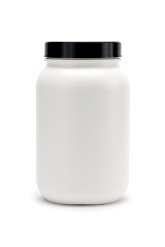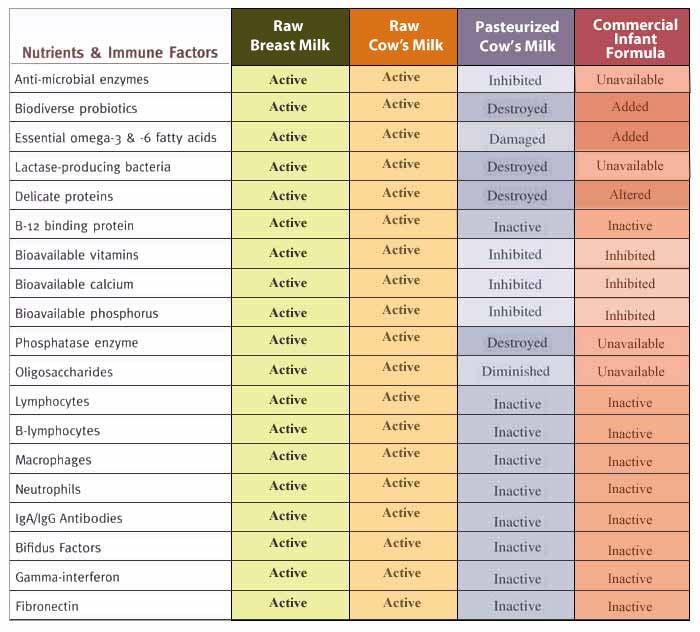|
Undenatured Whey Protein : What Is It, How Does It Work, And Why Should I Take It?What is Undenatured Whey Protein?
There are many manufacturers that have taken this whey protein and processed it into mixtures that can be used for building muscle or for muscle building and muscle development. You can find a large array of whey protein powder to make a breakfast smoothie, or protein drink, at any general nutrition, weight training, or bodybuilding supplements store or supplier. I recently saw a whey protein like this at Costco called Muscle Milk. Another one that is good for a high protein diet for use in a breakfast smoothie is called Designer Whey. These are very popular today for protein shakes and protein drinks. Whey protein is an excellent source of dietary protein, and is very effective in building muscle for athletic nutrition, or for anyone who would like to reduce their body fat, and build muscle through exercise and/or bodybuilding supplements. But all protein supplements are not created equal. This type of whey protein is classified as denatured. What does denatured mean? This simply means that the whey protein has been processed at a high temperature, usually above 160 degrees Fahrenheit or 72 degrees Celsius. This process is also known as pasteurization. The milk you buy in the store has been pasteurized, which means that it has been denatured or cooked at a high temperature to ensure that all microorganisms that may harm you have been destroyed. So to put it all together, what is undenatured whey protein? It is protein from whey that has not been denatured. This means that the protein must be processed in such a way that harmful organisms are destroyed, but the heat sensitive amino acids that make it bioactive, called branched chain amino acids, are not harmed. It has not been pasteurized, but processed at a lower temperature than traditional pasteurization in order to preserve the amino acids that are thermolabile, or destroyed by high heat. Terms that can be used interchangeably for undenatured whey protein are high biological value whey protein and bioactive whey protein. You may also hear it referred to as undenatured whey protein isolate, or undenatured whey protein concentrate.

As more people find out about the value of high biological value whey protein, a manufacturer may suggest on the label of their product that they are providing such a special protein. The very fact that it is in a tub is your first telling sign that this is not true. Truly bioactive whey protein is quite expensive to make and requires special technology to do so. Bioactivity is reduced when exposed to heat, air or moisture, so if it is in a tub, it is not undenatured whey protein.
This is not bioactive whey protein, and will not help you in raising glutathione in your cells.
Undenatured whey protein has a very unmistakable quality to it: it is unflavored and very difficult to mix. If you pour some bioactive whey protein powder into a liquid, it will float and resist mixing. This is one way to know you have truly undenatured whey protein.
You may also prefer the brief video version with Dr. Gutman and John Molson here: What Does Undenatured Whey Protein Do?
Undenatured whey protein will help you to build muscle just like regular whey protein will. The main reason you want to take it in an undenatured form is if you want to raise glutathione in addition to building muscle. That is the only reason you need to know the difference between the two, and it is an important difference.

Regular whey protein will build muscle! Undenatured whey protein will raise glutathione!
For an overview of what glutathione is, what it does, and why you need it,
click here.
Bioactive whey protein contains three specific proteins that are very high in essential amino acids that are missing from our diet today. The proteins are: albumin or bovine serum albumin, lactoferrin, and lactalbumin. These proteins are very high in the essential amino acid called bonded cysteine.

Bonded cysteine, which is two cysteine molecules linked together, is also called cystine. It is found in raw meat, raw eggs, and raw cow’s milk. Once you cook these three foods, the bonded cysteine or cystine is destroyed, since the bond that holds them together is thermolabile or destroyed by heat. Most of us today do not consume these foods raw, nor do we recommend that you do. Babies who are breast-fed have access to bonded cysteine in their mother’s breast milk until they are weaned. The closest food that we have to mother’s breast milk as adults is bovine or cow milk in raw form.

It is interesting to note, however, that years ago, before pasteurization, when people consumed raw milk from their local or family farm, they had higher glutathione levels in their blood. Now that we don’t have access to these foods in safe amounts, we have an even greater need than ever before to find a good source of bonded cysteine, so that we can be effectively raising glutathione in our bodies. The three amino acids that are needed by the body for how to raise glutathione are cysteine, glycine, and glutamate. Glycine and glutamate are plentiful in our diet, but cysteine is not. And since cysteine by itself is destroyed in the gut, it needs to be bonded in the way we find it in undenatured whey protein to do the job successfully. Thus, bonded cysteine is considered the rate limiting factor for raising glutathione in our cells. The journey of a bonded cysteine molecule from the mother’s breast or cow’s udder to your cells to make glutathione is a fascinating journey indeed. Let's follow along! When bonded cysteine is consumed from the mother's breast, or from undenatured whey protein made from raw cow's milk, it is in the form of two cysteine molecules bonded together by a sulfur bond. When free cysteine is consumed, it is normally destroyed in the gut. But when two of them are bonded together, it makes them "safe", and this bond is pepsin and trypsin resistant, which means your digestive enzymes will not be able to dissolve this bond. This is a good thing and what makes bonded cysteine so special! The bonded cysteine is absorbed through the intestinal walls into the bloodstream, which carries it to each and every cell in your body. That's 100 trillion cells in an average human body, and it goes to each and every one of them! Once the bonded cysteine enters the cell, it then breaks apart into two free cysteine molecules, and then each of these cysteine molecules can combine with available glycine and glutamate, and make glutathione, right there in each and every cell. It's quite a masterfully designed process!
So, put very simply, undenatured whey protein raises glutathione in your cells!Why Is Undenatured Whey Protein The BEST Way for How To Raise Glutathione?Very simply, bioactive whey protein is the best way for raising glutathione because it is the most natural way that you were created to raise it once you are weaned. And if you are reading this, I will assume that you are weaned! Mother’s breast milk works until you are weaned, and then after that, raw cow’s milk is the next best source! It is the closest substance in physical composition to mother’s breast milk. High biological value whey protein contains bonded cysteine, which your body needs to make glutathione in your cells. For a comparison of the nutrients in raw breast milk, raw cow's milk, pasteurized cow's milk, and commercial infant formula, please see the chart below:
Other ways do raise glutathione, after all, in various levels of efficacy. Some are natural, some are pharmaceutical, and many come with various side effects. We have chosen a particular brand of bioactive whey protein to raise our glutathione levels for several reasons.
The main reason is research that confirms high quality, effectiveness, and safety. If these considerations are important to you as well, please consider the breakdown of our reasons for using this particular brand of undenatured whey protein here:
Dr. Bounous began a research protocol at McGill University in Montreal over 30 years ago in 1978. He was truly interested in helping people in their search for good health, and specifically to help people to deal with cancer. Along with colleague Dr. Patricia Kongshavn, Dr. Bounous began a research protocol to find a dietary protein source that would boost the immune system. Further studies led to the discovery that an undenatured whey protein concentrate helped the mice in his studies to live longer by resisting disease, and specifically to resist cancer. He calls it serendipity - a very fortunate accident.
After further investigation, he discovered that this was because their glutathione levels were high. This was an amazing discovery for him - undenatured whey protein = higher glutathione levels! With the help of a wealthy benefactor, a Mr. Dieter Beer, Dr. Bounous was able to conduct over three decades of research with human clinical trials to validate this product so others could benefit. The whole story is quite remarkable to read and can be found in it’s entirety by reading “Breakthrough in Cell-Defense” by Dr. Gustavo Bounous. Click on the arrow below to view a brief 10 minute video entitled "Serendipity - The Life and Work of Dr. Gustavo Bounous".
The 2008 Nobel Prize Winner in Medicine, Dr. Luc Montagnier recommends this whey supplement for cancer prevention in his book on cancer, AIDS and oxidative stress. Click
here
to learn more about Dr. Montagnier and what earned him this distinction.
here.
The company that manufactures this is a biotechnology research company. As a result of their research, they have obtained 75 International Method of Use Patents. What does this mean for you? This guarantees that the undenatured whey protein is efficacious. This means it will in fact raise intracellular glutathione in every one who takes it. This company has also obtained a listing in the prescription drug edition of the Physician’s Desk Reference, which in the United States, is the Doctor’s Bible. In Canada, this particular brand of undenatured whey protein is also listed in the Compendium of Pharmaceuticals and Specialties.
The company that makes Immunocal is the only nutritional company to have a product listed in the prescription drug edition of the Physician’s Desk Reference. Immunocal is considered a nutraceutical, or medicinal food. For more on nutraceuticals, please
click here.
It is a natural, non drug supplement.
What about safety? The list of adverse reactions for Immunocal are published here from the PDR in their entirety: “Gastrointestinal bloating and cramps if not sufficiently rehydrated. Transient urticarial-like rash in rare individuals undergoing severe detoxification reaction. Rash abates when product intake stopped or reduced.” This means if you don’t mix it up well with liquid, you might have gas or burp. And it you have a lot of
toxins
in your system, you might get a rash, that goes away if you stop or reduce taking the undenatured whey protein. That’s it! Most that I know want the toxins in their system to be removed, so they continue taking it, and the rash goes away on it's own.
Who cannot take it? Under "Contraindications" this PDR listing states: "Immunocal is contraindicated in individuals who develop or have known hypersensitivity to specific milk proteins.” So if you are allergic to the proteins mentioned earlier, you would know since you would have been allergic to your mother’s breast milk as an infant. So just about everyone can take it. This is not the same as lactose intolerance. The same listing of the PDR goes on to state: “Although a bovine milk derivative, Immunocal contains less than 1% lactose and therefore is generally well tolerated by lactose-intolerant individuals." For those that are on casein and gluten-free diets, the casein that is found in many milk products has been removed as well.
What about Warnings? Note this direct quote from the PDR listing: “Patients undergoing immunosuppressive therapy should discuss the use of this product with their health professional.” The reason for this is that Immunocal raises glutathione, which is known to strengthen your immune system. So if you are taking drugs to suppress your immune system, you would want to discuss this with your physician first.
How do you take Immunocal? You mix it with a small amount of liquid, or other soft food, and drink it or eat it. It is a little difficult to mix, as mentioned earlier, but once you know how to do it, it is pretty easy. That’s it! You should take high biological value whey protein every day for raising glutathione levels and keeping them high.
To see what the doctors are saying about glutathione and Immunocal, watch this 9 minute tutorial here:
So, in conclusion, what is undenatured whey protein and what does it do? It is a form of whey protein that has not been destroyed by high heat or pasteurization. It is not flavored, does not come in a tub, and does not mix easily in water. It is supplied in air and water tight individual powder packets to ensure it’s effectiveness. Bioactive whey protein is a potent precursor or building block for raising glutathione. It does this by supplying bonded cysteine to your cells. They, in turn, use it to make glutathione right in your cells, all 100 trillion of them. Why is it the best way for raising glutathione? Because of its proven quality, effectiveness, and safety. The qualities and credentials for Immunocal have been thoroughly researched and published for all to see. Research is ongoing to continue this understanding of how this high biological value whey protein raises glutathione and therefore impacts several disease states. We are assured of its safety, since these results have been published for us to review in entirety in the Physician’s Desk Reference. It is the only non drug glutathione precursor to be listed in such a reference. We have been using Immunocal every day for the last three years and we have never felt better! Dr. Jimmy Gutman, who appears in the video above, is the world's most published author on the subject of glutathione. His current bestseller is entitled "Glutathione - Your Key To Health."
|

 Another way that you can tell it is not bioactive is if it is flavored. If it comes in vanilla, chocolate, or strawberry, then it has been hydrolyzed, which means it has been denatured in order to make it easier to mix. You can also check the nutritional supplements information on the label as well. It may list cysteine as an ingredient, but this will be lost in the digestive process.
Another way that you can tell it is not bioactive is if it is flavored. If it comes in vanilla, chocolate, or strawberry, then it has been hydrolyzed, which means it has been denatured in order to make it easier to mix. You can also check the nutritional supplements information on the label as well. It may list cysteine as an ingredient, but this will be lost in the digestive process.



 This particular brand of undenatured whey protein was discovered by Dr. Gustavo Bounous, both a surgeon and research scientist who initially discovered the elemental diet for use in the treatment of hemorrhagic shock and intestinal ischemia.
This particular brand of undenatured whey protein was discovered by Dr. Gustavo Bounous, both a surgeon and research scientist who initially discovered the elemental diet for use in the treatment of hemorrhagic shock and intestinal ischemia.

